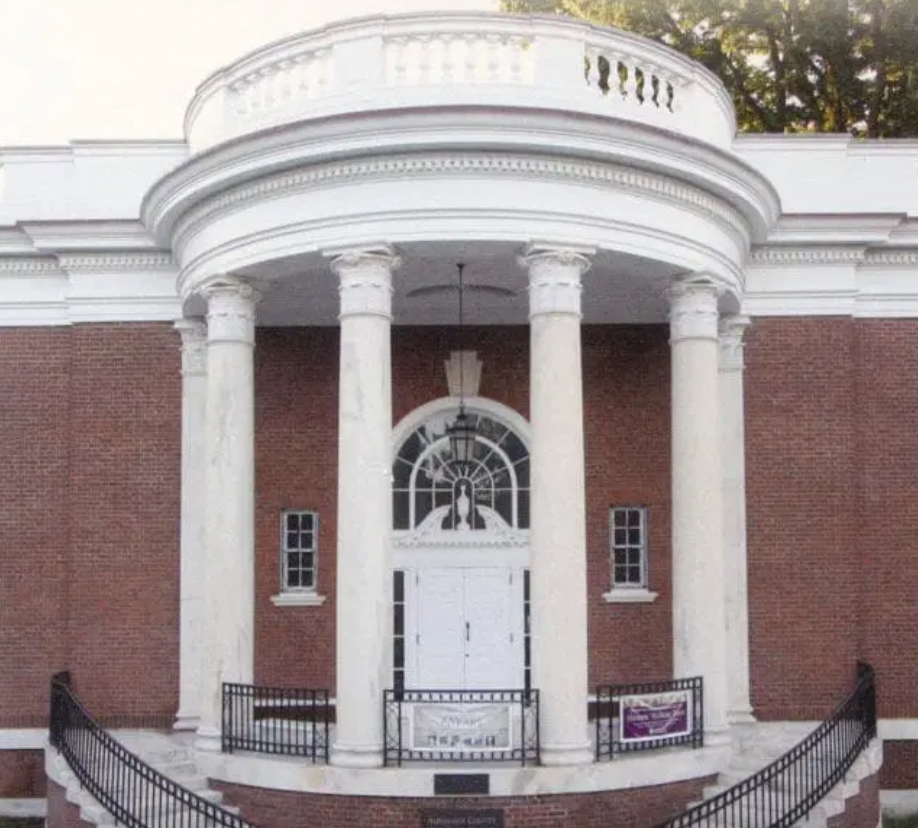Riley Fay Discusses Her Internship at the Albemarle Charlottesville Historical Society
by Riley Fay | | Monday, August 21, 2023 - 09:48

My name is Riley Fay, and I am a rising third-year at UVA majoring in History and Political & Social Thought. I spent my summer in Charlottesville this year, and although it might seem like I did not travel far for my internship, I found myself transported through time more often than I expected.
My Nau Center internship took place at the Albemarle Charlottesville Historical Society (ACHS), located just one block away from the Downtown Mall. From the front porch, one can see the park where the statue of Robert E. Lee once stood, a constant reminder that Charlottesville residents are still reckoning with the area’s history. Inside the ACHS, an exhibit put together by local school children allows you to jump back in time immediately as you face textbooks from the 19th century or a majorette uniform from the 1950s.
I spent the vast majority of my time at the ACHS working to update “Cvillepedia,” an open-source platform for local history and, quite frankly, anything at least tangentially related to the Albemarle region. I focused on the Civil War and its aftermath here, but I found that it was impossible to explore just one piece of history at a time, particularly when that period of time was one of the most consequential in the history of this area.
Several of the first articles I wrote on Cvillepedia focused on churches. A large number of Charlottesville’s churches were founded in the Reconstruction Era, as Black residents sought to worship independently from the white churches that had for so long been led by their enslavers. Even decades after Reconstruction, Black churches were built to offer diverse faiths to the community. I found myself consumed by the existence of St. Mary Margaret’s Church, a Black Catholic parish founded in the 1950s. The church only held services for about a decade before being closed as part of a push towards integration in Catholic parishes. Newspaper records, however, reveal the parish’s vibrant community, documenting everything from seven-year-old children receiving their first Communion to a 99-year-old woman named Florence Commodore’s baptism and confirmation.

Attempting to cover the entire Civil War and its aftermath on one Cvillepedia page would have been futile. Instead, I found myself creating individual pages for more than 40 different people, ranging from Socrates Maupin (the UVA faculty chair who asked Union soldiers to spare the University in March 1865) to Edith Hern Fossett (the enslaved head chef of Monticello whose family home was a key stop on the Underground Railroad). Most of my sources were other websites, such as the President’s Commission on Slavery and the University or the Daughters of Zion Cemetery’s records on Black families. For some people and places, I turned to the reference library that surrounded me at the ACHS. Online resources, for example, contained few details about Rebecca Fuller McGinness, who taught at the Jefferson School for 45 years. The ACHS, however, had a biography of her that was released just one year after she passed away at the age of 107. She was one of many people I wrote about this summer that I sincerely wish I could have met in person.
Although I worked on my laptop most of the time, I still had the opportunity to engage with the more “public” side of public history. The ACHS is open to the public as a resource, and it is of particular interest to those doing genealogical or archaeological research. It contains a wealth of collections relating to the Charlottesville area, including maps, vital statistics, and old newspaper copies that are otherwise unavailable online. A wonderful group of volunteers was on hand to answer visitors’ questions, but I found myself offering up tidbits of knowledge about the area, as well.
As someone who grew up in Virginia, I came to this internship believing I would not necessarily happen upon something brand-new to me. I could not have been more wrong. Every day on my drive to work, I noticed something about Charlottesville that I never would have were it not for this research. I had no idea Elliewood Avenue is named after a local woman, or that nearly half of the Vinegar Hill neighborhood was once owned by a Black woman named Nannie Cox Jackson, who also taught at the Jefferson School. There is, to put it simply, more history in this area than I could have ever imagined. I can no longer walk down West Main Street without recognizing building addresses that once belonged to prominent members of the Black community, who were forced out in the mid-20th century in the name of “improving” the city. This is the part of public history that inspires me – the fact that we still occupy the space where that history took place, that we can point at a building and know for a fact who once lived there and what their life looked like at the time they did. We can learn from the past just as much, if not more, than we can from the present.
